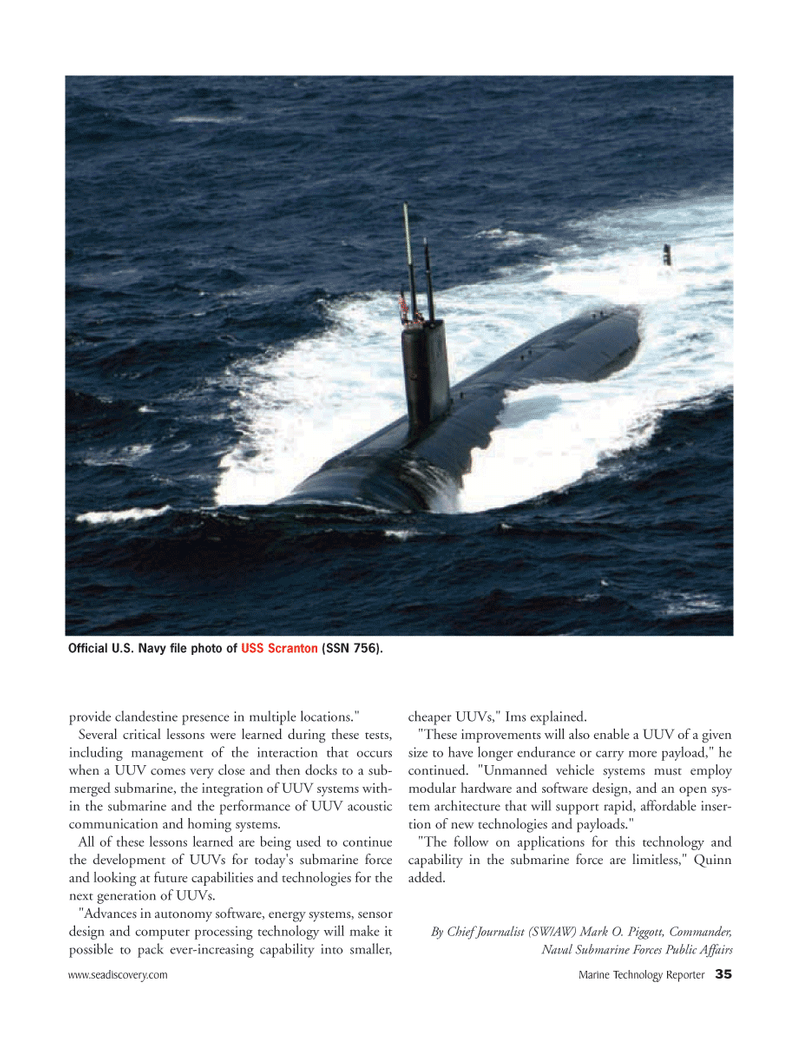
Page 35: of Marine Technology Magazine (May 2006)
The Communications Edition
Read this page in Pdf, Flash or Html5 edition of May 2006 Marine Technology Magazine
www.seadiscovery.com Marine Technology Reporter 35 provide clandestine presence in multiple locations."
Several critical lessons were learned during these tests, including management of the interaction that occurs when a UUV comes very close and then docks to a sub- merged submarine, the integration of UUV systems with- in the submarine and the performance of UUV acoustic communication and homing systems.
All of these lessons learned are being used to continue the development of UUVs for today's submarine force and looking at future capabilities and technologies for the next generation of UUVs. "Advances in autonomy software, energy systems, sensor design and computer processing technology will make it possible to pack ever-increasing capability into smaller, cheaper UUVs," Ims explained. "These improvements will also enable a UUV of a given size to have longer endurance or carry more payload," he continued. "Unmanned vehicle systems must employ modular hardware and software design, and an open sys- tem architecture that will support rapid, affordable inser- tion of new technologies and payloads." "The follow on applications for this technology and capability in the submarine force are limitless," Quinn added.
By Chief Journalist (SW/AW) Mark O. Piggott, Commander,
Naval Submarine Forces Public Affairs
Official U.S. Navy file photo of USS Scranton (SSN 756).
MTR#4 (33-48).qxd 5/8/2006 10:08 AM Page 35

 34
34

 36
36
